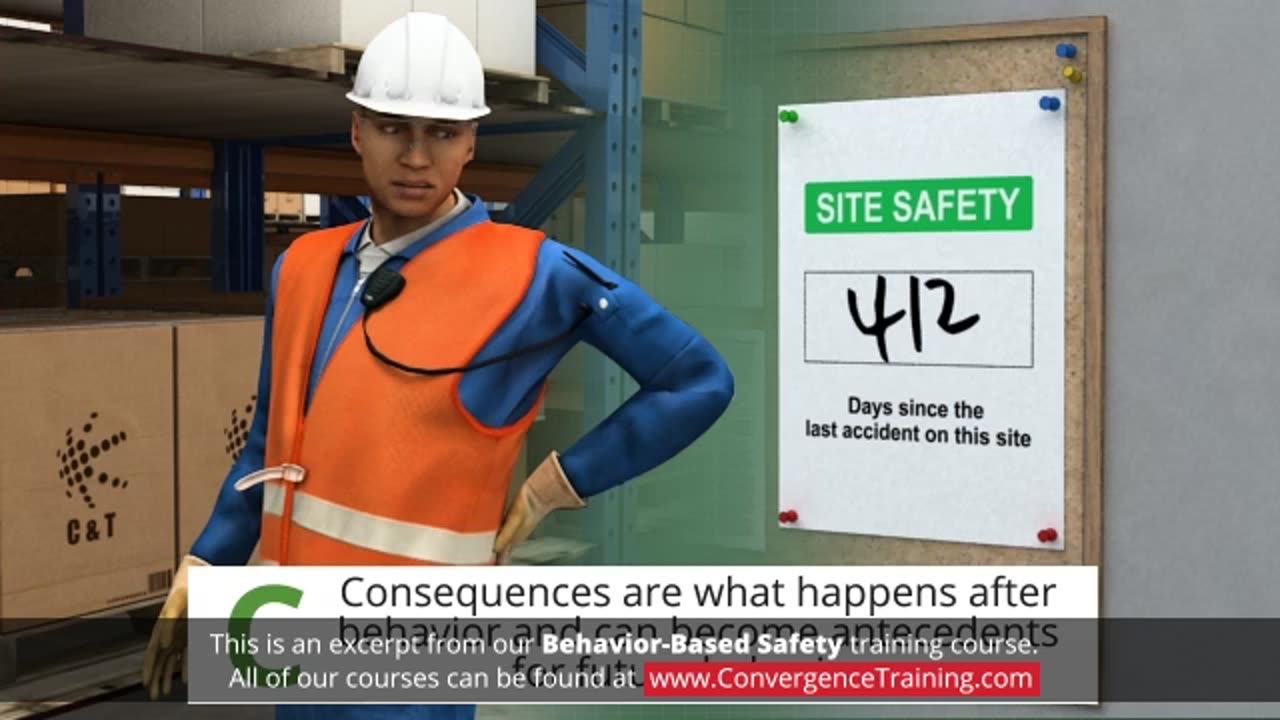Premium Only Content

Behavior-Based Safety Training
### **Behavior-Based Safety (BBS) Training Guide**
**Objective**: Train employees and supervisors to understand and implement behavior-based safety practices, fostering a proactive culture of safety by addressing at-risk behaviors and reinforcing safe practices.
---
### **1. What is Behavior-Based Safety (BBS)?**
- **Definition**:
A safety management approach that focuses on identifying, observing, and modifying workplace behaviors to reduce accidents and injuries.
- **Key Principle**:
Most workplace incidents are caused by unsafe behaviors rather than unsafe conditions. BBS aims to identify and change these behaviors.
---
### **2. Importance of Behavior-Based Safety**
- **Reduces Workplace Accidents**:
By addressing at-risk behaviors, injuries and incidents can be minimized.
- **Promotes a Safety Culture**:
Encourages everyone to take responsibility for safety, fostering teamwork and accountability.
- **Improves Employee Engagement**:
Employees feel empowered and valued when they contribute to safety practices.
---
### **3. Core Components of BBS**
1. **Behavior Observation**:
- Identify critical behaviors that impact safety.
- Observe employees in a non-punitive manner to gather data on at-risk and safe behaviors.
2. **Behavior Analysis**:
- Understand why unsafe behaviors occur.
- Identify triggers (antecedents) and consequences driving the behavior.
3. **Feedback and Coaching**:
- Provide immediate, constructive feedback to reinforce safe behaviors and correct unsafe ones.
4. **Continuous Improvement**:
- Regularly review observation data to identify trends and improve processes.
---
### **4. Identifying At-Risk and Safe Behaviors**
- **Examples of At-Risk Behaviors**:
- Not wearing PPE.
- Rushing or taking shortcuts.
- Ignoring safety procedures or rules.
- Failing to report hazards or near-misses.
- **Examples of Safe Behaviors**:
- Wearing appropriate PPE at all times.
- Following established procedures.
- Maintaining three points of contact when climbing.
- Reporting hazards and near-misses promptly.
---
### **5. Steps to Implement BBS**
#### **1. Establish Clear Safety Goals**
- Set measurable objectives, such as reducing specific incidents or improving PPE compliance.
#### **2. Train Observers**
- Select and train employees to conduct observations effectively.
- Teach observers to use positive reinforcement and avoid a punitive approach.
#### **3. Conduct Observations**
- Regularly observe work practices in a respectful, non-intrusive manner.
- Focus on behaviors, not individuals, to avoid blame.
#### **4. Provide Feedback**
- Acknowledge and praise safe behaviors.
- Offer corrective feedback for at-risk behaviors, focusing on the "why" rather than the "who."
#### **5. Track and Analyze Data**
- Use observation checklists to document findings.
- Identify patterns and prioritize areas for improvement.
#### **6. Implement Changes**
- Modify procedures, provide additional training, or adjust work environments based on data insights.
---
### **6. Reinforcing Positive Behaviors**
- **Recognition Programs**:
- Reward individuals or teams who consistently demonstrate safe behaviors.
- **Frequent Feedback**:
- Regularly reinforce safety practices through coaching and communication.
- **Leadership Involvement**:
- Supervisors and managers should model safe behaviors and actively participate in BBS efforts.
---
### **7. Challenges in BBS**
- **Resistance to Change**:
- Address through open communication, emphasizing benefits for personal safety and team well-being.
- **Observer Bias**:
- Mitigate by training observers to focus on behaviors and use objective criteria.
- **Sustaining Momentum**:
- Keep the program dynamic by setting new goals, celebrating successes, and integrating feedback.
---
### **8. Employee Involvement**
- **Empowerment**:
- Encourage employees to take ownership of their safety and that of their peers.
- **Near-Miss Reporting**:
- Foster an environment where reporting near-misses is seen as a proactive step, not a negative one.
- **Safety Committees**:
- Create committees to regularly review BBS data and recommend improvements.
---
### **9. Measuring Success**
- **Key Metrics**:
- Reduction in incidents or injuries.
- Increase in safe behavior observations.
- Improved compliance with safety procedures.
- **Employee Feedback**:
- Use surveys or meetings to assess employee perceptions of the BBS program.
- **Observation Data**:
- Analyze trends in behavior to gauge the program's effectiveness.
---
### **10. Training and Tools**
- **Observation Checklists**:
- Develop simple, easy-to-use forms for documenting safe and at-risk behaviors.
- **Role-Playing Scenarios**:
- Practice giving feedback in a supportive, non-punitive way.
- **Case Studies**:
- Review real-life examples of how BBS has reduced incidents in similar industries.
---
### **11. Key Takeaways for Participants**
- Safety is everyone’s responsibility.
- Focus on behaviors, not individuals, when addressing safety issues.
- Positive reinforcement is more effective than criticism.
- Continuous improvement is the key to sustaining a strong safety culture.
---
Would you like this formatted as a presentation, checklist, or detailed handbook? I can also include templates for observation checklists and feedback forms.
-
 45:43
45:43
BonginoReport
4 hours agoThe Future of MAGA: Natalie Winters + Evita
64.4K42 -
 2:44:15
2:44:15
Matt Kohrs
10 hours agoCPI Inflation Report: Time To Buy The Dip?! (DJT, MSTR, NVDA & TSLA) || The MK Show
24.6K3 -
 LIVE
LIVE
Vigilant News Network
14 hours agoPete Hegseth Embarrasses Dem Leaders in Fiery Senate Showdown | The Daily Dose
935 watching -
 1:45:19
1:45:19
Jeff Ahern
2 hours ago $0.67 earnedNever Woke Wednesday With Jeff Ahern ( The Gruesome Newsom Twosome)
6.53K -
 1:21:03
1:21:03
Game On!
15 hours ago $3.03 earnedJerry Jones wants to bring Deion and Shedeur Sanders to the Cowboys!
38.4K4 -
 37:24
37:24
MichaelBisping
23 hours agoEDDIE ALVAREZ: Predicts Islam vs Arman, BKFC KnuckleMania, UFC 311 & More! (Interview)
61.2K8 -
 22:04
22:04
Scammer Payback
17 hours agoCrazy Scammers Spoof Emergency 911
79.6K13 -
 8:28
8:28
Misha Petrov
22 hours agoLiberals OUTRAGED Over Carrie Underwood Performing at Trump’s Inauguration
53.5K68 -
 22:34
22:34
Degenerate Plays
1 day ago $3.71 earnedWe're Having Bedroom Problems... Literally - Five Nights At Freddy's 4 : Part 5
44.3K -
 1:00:10
1:00:10
Trumpet Daily
23 hours ago $8.35 earnedThe War to Restore America - Trumpet Daily | Jan. 14, 2025
37K15